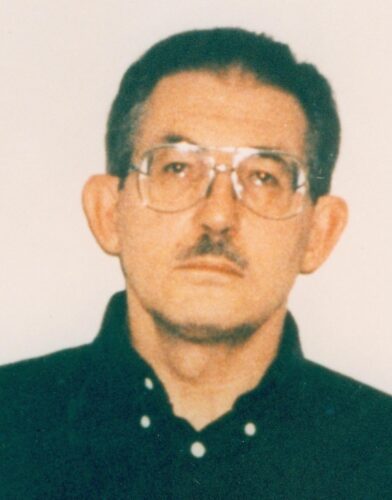
May 30, 2023 | #deception101
Eighty years ago, a dead British naval officer named Bill Martin washed up on a Spanish beach. He was a landing craft expert with a fiancée named Pam. They’d gone to the theater in London a few days before his plane crashed in the Atlantic with no survivors.
Based on the letters in a briefcase tethered to his waist, Martin had been carrying secret orders to a British general in North Africa.
The letters wound up in the hands of supposedly neutral Spanish authorities who shared them with representatives of Hitler’s Nazi government. Photographs of the letters were rushed to Berlin.
In this way, Hitler learned that the Allies planned to attack via Greece and the Balkans, with a false feint at Sicily and a minor diversion in Sardinia. Reports from other sources soon trickled in, verifying the Allied plan for Greece.
In response, Hitler fortified forces there rather than Sicily.
Fished in
Bill Martin never existed.
He wasn’t a naval officer. He didn’t have a fiancée named Pam. He never went to the theater in London.
The body that washed ashore in Spain with top secret information was the product of Operation Mincemeat, an intelligence operation designed to trick Germany into diverting military forces away from Sicily before the Allied invasion of the Italian island in July 1943.
The ruse worked.
Thousands of lives were saved when US and UK forces landed on the beaches of the Mediterranean island. Although the remaining German troops fought hard, the Allies successfully took Sicily and drove north up the boot of Italy. The Germans conducted a running retreat but the Italian army collapsed, taking Mussolini and the Pact of Steel between Rome and Berlin with it.
Operation Mincemeat
The body that became Bill Martin was that of Glyndwr Michael, a Welsh vagrant who’d died of accidental phosphorus poisoning. Michael’s body was preserved in a morgue, then dressed in a naval uniform, carried in a special capsule aboard a British submarine, and deposited on the Spanish coast at Huelva.
It was a daring and tricky concept that took months of painstaking research and preparation. The questions the planners faced were daunting.
For example, what if a good Spanish pathologist correctly determined the body had been dead for far longer than the date on the theater ticket stub? What if the operation was leaked and Hitler knew to expect a ruse? What if German spies inside Britain discovered that Bill Martin was a fake? If the letters were labelled as fake because London didn’t seem worried they were missing?
And so on.
How did they carry off such a stunning deception?
Attention to detail
Knowing that the Germans had eyes everywhere, Operation Mincemeat planners created and backstopped Bill Martin’s entire life. From birth certificate to Pam’s engagement ring, every detail had to hold up to the most diligent scrutiny. It was the ultimate CYA effort.
One unsupported fact and everything about Bill Martin, including the letters, would be suspect.
Authoritative voices
The more a lie is repeated by trusted voices, the more believable it becomes.
A key British double agent known as Agent Garbo was highly regarded by Berlin. Planners there thought he was running a network in spies inside England but each spy was a complete fiction; another amazing World War II deception.
His British handler instructed Garbo to inform his German handler that a plane with an important courier had gone down and that London was panicking. Garbo’s authoritative voice created a self-reinforcing echo chamber that “verified” the fake battle plan.
Know your audience
Thanks to ULTRA intercepts of German communications, the British had a significant amount of information on both Spanish and German officials in Spain. In part, this prompted the port of Huelva to be the drop zone, because the German representative there could be counted upon to take prompt action.
Bill Martin’s details could be primed to cater to these officials. For example, the names dropped in the letters had to be recognized in Berlin.
From Spain’s rocky status as a neutral, to the German High Command’s reluctance to challenge Hitler’s war planning, it was essential to understand how different actors would perceive the situation and cater to their motivations.
The lesson for us
Besides being a brilliant World War II deception that saved lives, Operation Mincemeat, is a universal lesson in what makes deception “stick.”
This includes getting the details right, reinforcing the lie with authoritative voices, and catering to the intended recipient’s weaknesses, vanities, vulnerabilities, beliefs and habits.
As in Operation Mincemeat, deception is often intended to make you take action.
Look around. These “best practices” in fomenting and perpetuating deception are still in use today.
This post is the first in my new #deception101 series in which I take a 360 look at deception, from the perspective of being both a mystery author a an ex-CIA intel officer.
Intrigued? Leave a comment!
For more, get OPERATION MINCEMEAT by Ben Macintyre


May 18, 2023 | #deception101
I took multiple polygraph tests during my 30-year career as an intelligence officer with the CIA. The theory behind the poly is that basic bodily functions (breathing, heart rate, etc) react if you lie.
Every test followed the same procedure. I sat in a comfortable chair, got hooked up to the machine, and answered all the examiner’s questions with a simple yes or no.
The test makes you dig into your subconscious to determine why you react to certain questions. You never know if you are really reacting or if the examiner is trying to psyche you out for reasons you don’t know.
Inevitably stressful.
Here’s a protip: Never drink coffee before taking a polygraph test. You don’t want to feel any more jittery than you already do or make your heart race for no other reason than a morning latte. No bathroom break, either.
Without so much as a molecule of caffeine, I blearily stumbled into my first polygraph test, the one that would determine if I was honest enough to be offered a job at CIA.
The chair was a giant cushy recliner. The polygraph instrument was a cross between a suitcase and an electrocardiogram machine.
After the first round of questions, the examiner left the room (normal procedure) leaving me hooked up and unable to get out of the recliner. There was a two-way mirror so somebody was watching me.
Meh. I closed my eyes.
The examiner woke me up about 20 minutes later.
I passed.
Years later, I yawned during a test. The examiner barked, “Why did you do that?”
“I’m tired,” I said truthfully. “I haven’t had any coffee today.”
After I passed, he told me that yawning is a technique to defeat the machine.
On to Aldrich Ames
Arrested in February 1994, Aldrich “Rick” Ames was a career CIA officer who spied for Moscow, selling out a raft of important agents helping the US understand the threat from a nuclear-powered Soviet Union. No ideological saint here; Ames sold secrets to support his drinking habit, lavish lifestyle and newish Colombian wife.

Aldrich Ames mugshot, Feb 1994. Source: FBI.gov
He was a “mole,” a spy within his own intelligence service. Currently serving a lifetime sentence for treason and fraud, he is responsible for the deaths of good people. Read the FBI report on him:
I am not impartial. I hope Ames is lonely and dejected and his prison food is noxious.
The years-long hunt for a traitor inside CIA was documented in CIRCLE OF TREASON by CIA officers Sandra Grimes and Jeanne Vertefeuille. I highly recommend it.
The point which I am taking too long to make is that Aldrich Ames was polygraphed as a possible suspect during the hunt. He passed. Twice.
When asked about his inexplicable wealth, he claimed that his money came from his wealthy in-laws, who were giving him a “free ride.” His claim was fact-checked, and yes, his in-laws were rich.
When asked about foreign contacts, “Rick explained that he had been introduced to numerous people in Colombia when he and his wife visited her family. He added that he had no idea whether any of them were employed by Colombian security services, and suggested to the polygrapher that this might explain his reaction to the question. The polygrapher accepted this explanation.”
He never defeated the polygraph machine, he defeated the examiners.
Interestingly, Ames was dumbfounded when he was finally arrested. He was sure he had outsmarted the mole hunters.
AI as lie detector
Artificial Intelligence (AI) seems to be able to do everything from coding a website to drive a car and write a novel. (I’m investing as soon as it can do laundry and clean toilets)
It can spot deception, too.
Lemonade Insurance depends on its “AI Jim” claims bot to spot fraud. The company’s blog tells how AI Jim flagged a fraudster who submitted multiple claims using fake accounts and even disguises. “AI Jim caught him red handed” and information was turned over to law enforcement. https://www.lemonade.com/blog/the-sixth-sense/
According to researchers in Israel, a new technology that measures “the movement of facial muscles is 73% accurate at detecting when a person is telling a lie.” https://neurosciencenews.com/lie-detection-neurotech-19679/
The technology assesses the tiny involuntary twitches that LIESPOTTING author and expert Pamela Meyer calls “emotional leakage.” She writes “The problem (for liars, anyway) is that much of the time we can’t anticipate our feelings—our emotions catch us by surprise.”
What about voices assessed by AI? Changes in tone, inflection, speed of speech, etc. All these minute vocal changes can be giveaways, too.
IMHO
If the counterintelligence team hunting for a mole inside CIA had had AI lie detection tools back then, they almost certainly would have identified Ames as the mole long before his arrest in 1994. Ames wouldn’t be able to control his “emotional leakage.” That would be enough to intensify interest in him and reassess his polygraph tests.
Moreover, the team could have narrowed the scope of the hunt sooner, too, as other suspects were crossed off the list more swiftly.
Last words
In the future, will AI lie detection be so reliable that it has the final say, instead of a human as was the case when Ames passed his polygraphs?
That could be a slippery slope.
As AI deception detection tools go mainstream, I hope we treat them just as that—tools. We can’t become wholly dependent on them. Let’s not surrender the human critical thinking skills that ultimately caught traitor and spy Aldrich Ames.





